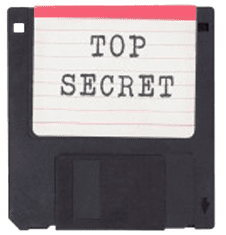By Chevi Rubin
Bringing meaning to online Jewish learning
In our last post we argued that flashy uses of technology alone will not get students to learn material in a deep and meaningful way. This sentiment begs the question, what does? How can online Jewish studies elicit real thought, reflection, and excitement in students?
As Jewish educators we have all taught students who simply love learning. We have been the lucky teachers of classes that eagerly read the Torah portion, anticipate the commentators’ questions, and relish in the centuries old and ongoing conversations that ensue. But we also know and love the students who struggle to connect with the material and want so badly to find personal relevance in their learning.
This year Lookstein Virtual Jewish Academy launched a two-part course on Sefer Shemot, the first of which ran last semester, and the second went live just last month. In talks with our curriculum development team, it became clear that making the beginning of Sefer Shemot come alive was fairly straightforward. The burning bush, the plagues, and the Jewish people’s exodus from Egypt lend themselves to an exciting and engaging classroom experience. But what about the stories that Hollywood hasn’t picked up on? What about the chapters devoted to the building of the Mishkan (Tabernacle) and the study of Mishpatim (Biblical laws)? Will our students find meaning and relevance in the remaining 40 years of dry desert?
What is Lookstein Virtual Jewish Academy’s “secret recipe” for student-centered online Jewish learning?
At Lookstein Virtual Jewish Academy, Project Based Learning (PBL) makes all the difference. When we look at a course in terms of “how will our students apply their learning” and not “what will they learn,” the results are dramatic. We find ourselves immediately in tune to the students’ perspectives and are able to design material in a much more relatable way. Our role becomes one of facilitator, providing students with the content and tools they need to access, analyze, and connect the dots. An authentic project asks the students to internalize, process, and own the course material, and to use it (and many other critical skills) to solve a problem or answer a question. We scaffold from the start of the semester, calibrate carefully, and ensure that our project is reflective of our educational goals.
Imagine being given the opportunity to interview experts, create your own interpretations, and plan real solutions to real problems. The benefits of learning this way are countless. Our students have more control over their learning and can focus on the elements that speak to them most. They are mastering essential 21st century life skills such as collaboration, problem solving, and critical thinking. They learn the material deeply and are able to effectively transfer lessons learned from one context to the next.
With PBL, we make all of Sefer Shemot, the more and less cinematic selections, come to life. Our students study age-old stories, discoveries, and debates from our unique history and most sacred texts. But that’s not where it ends. They are inspired to internalize these lessons, to study further, and to become active participants in our chain of tradition.
To learn more about PBL basics:
For ideas and resources for integrating PBL into Jewish Schools:
http://ideaschoolsnetwork.com/
To read up on 21st Century Skills:
http://www.p21.org/

